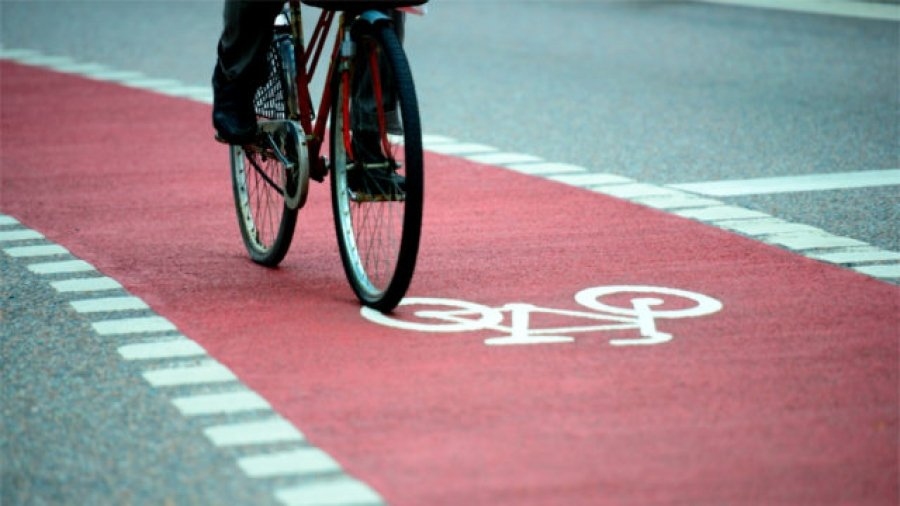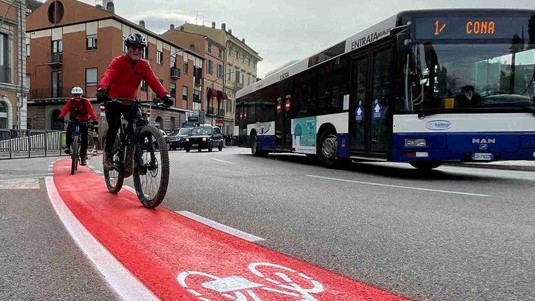
The power of Italy’s new road law reforms
In 2020, Italy introduced new innovative methods for reorganising street space as part of its COVID-19 recovery strategy. Two specialised decrees reformed road laws to include five new methods for dedicating road space to cyclists.
Thanks to sustained advocacy action from the Federazione Italiana Ambiente e Bicicletta (FIAB), Italy has successfully capitalised on the extraordinary situation of the COVID-19 pandemic to increase cycling in its cities. Using special legislations introduced in May and September 2020, the Italian government introduced new road law reforms to help reorganise street space in cities, notably by allowing the development of low-cost and easily implemented cycling infrastructure, such as temporary pop-up cycle lanes.
These reforms, in combination with the national purchase incentive scheme for bicycles, “Bonus Bici”, have proven a huge success. Eco-counter systems for bicycles registered an increase of 48% in cycling levels when comparing October 2019 with October 2020, while the sales of both traditional and pedal-assisted bicycles increased by 17% to a total of 2,010,000 bicycles sold.
While it is commonly thought that the biggest obstacle for the development of cycling infrastructure is a lack of money or space, the example of Italy shows that road law reforms can be an affordable and decisive means for the widespread implementation of cycling spaces in cities.
What Are the Reforms About?
The two new pieces of legislation, Decreto Rilancio and Decreto Semplificazioni, introduced five new ways for road laws to give more space to cyclists using simple horizontal and vertical signs. These methods consist of cycle lanes, contraflow cycling, advanced stop lines, school zones and cycle streets:
Figures from the FIAB guidelines for municipalities about changes in road law, available here
While these methods are not intended as substitutes of the existing modalities, such as segregated cycle tracks, they do provide new possibilities to encourage cycling in cities, specifically by making the regulations for these road modifications more simple, clear and flexible. For example, cycle lanes represent a flexible solution which only requires basic longitudinal road markings, allowing for an effective expansion of cycling networks on existing roads without taking space from pedestrians.
In cycle streets, which are already a trend in Northern Europe, other vehicles are permitted but cycling is prioritised by using speed limits and permitting cyclists to ride side-by-side. Contraflow cycling allows one-way streets to be used for cycling in both directions, which, similarly to cycle lanes, had stricter requirements before the new reforms, making them difficult to realise. Advanced stop lines are dedicated spaces for bicycles which improve visibility and safety while sharing space with other vehicles at crossings.

Example of an advanced stop line, photo courtesy of FIAB
These changes allow cities to provide coherent, safe, direct, comfortable and attractive cycling infrastructure, giving the bicycle more rights, visibility and recognition as a means of transport.
How It Happened: An Inspiring ECF Member Success Story
As Alessandro Tursi, President of FIAB, told European Cyclists' Federation (ECF), “FIAB has been pushing for a national road legislation inspired by the Northern countries for more than a decade”. However, it was only during the sanitary crisis that, thanks to the renewed attention given to cycling as a transport solution, that FIAB’s recommendations were included in national legislation.
The final decisive push for the introduction of these road changes in 2020’s decrees was done by local administrators, who were trained and influenced through years of advocacy campaigns by FIAB and its local organisations across Italy.
“This happened thanks to the awareness-raising work which has been done over the years with local administrators”, said Tursi. “The coordinator of ANCI [Association of the Italian Municipalities] always talks about how it was FIAB that opened his mind and inspired him to work on these issues”. This highlights the far-reaching potential of a National Cycling Federation composed of local cycling groups (numbering almost 200 in Italy) that implement synergic work both at local and national level.

Photo courtesy of FIAB
Key Takeaways
First, FIAB’s successful advocacy story can be of inspiration for other ECF member organisations, especially considering the opportunity for more cycling to be included in National Recovery and Resilience Plans, in which a combination of funding and reforms is required. Second, it’s time to debunk the myth that good cycling practices are exclusive to Northern Europe and bring good cycling practices everywhere with intelligent, evidence-based road reforms. Good cycling measures such as these are not yet standard across Europe, but as shown by the example of Italy, the effectiveness of road law reforms proves they certainly have the potential for making this a reality.
Cover photo courtesy of FIAB
Contact the author
Recent news!
Upcoming events
Contact Us
Avenue des Arts, 7-8
Postal address: Rue de la Charité, 22
1210 Brussels, Belgium










